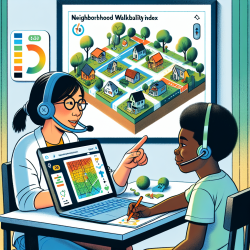In the realm of physical and occupational therapy, the advent of telerehabilitation, specifically store and forward applications, is transforming how services are delivered. The research article "Telerehabilitation Store and Forward Applications: A Review of Applications and Privacy Considerations in Physical and Occupational Therapy Practice" by Peterson and Watzlaf (2015) provides a comprehensive overview of these technologies, highlighting their clinical applications, privacy, and security considerations. This blog aims to help practitioners improve their skills by implementing the research outcomes or encouraging further investigation into these promising technologies.
Understanding Store and Forward Applications
Store and forward applications in telerehabilitation enable therapists to provide services remotely, leveraging digital images, videos, and text messaging to extend exercise instruction into the home. These tools are particularly beneficial for clients who face barriers to accessing in-person therapy. However, before integrating these technologies, therapists must ensure that the health information managed by these applications is secure and HIPAA-compliant.
Key Considerations for Implementation
When selecting a store and forward application, practitioners should evaluate several factors:
- Clinical Needs: Assess the specific therapeutic goals the application will address.
- Staff Training: Identify the training requirements for staff to effectively use the technology.
- Integration Plan: Develop a strategy for integrating the application within existing IT frameworks.
Privacy and Security Regulations
Health information is highly regulated, with the HIPAA and HITECH Acts providing stringent guidelines for protecting personal health information. Practitioners must ensure that any store and forward application complies with these regulations. Key aspects include:
- Protected Health Information (PHI): Ensure that the application protects all forms of PHI, whether electronic, paper, or oral.
- Covered Entities (CE) and Business Associates (BA): Understand the roles and responsibilities of CEs and BAs under HIPAA and HITECH.
- Business Associate Agreements (BAA): Establish written agreements with BAs to ensure compliance with privacy and security rules.
Practical Applications
To illustrate the practical application of store and forward technologies, consider the case of Mary, who is undergoing post-operative rehab for a knee injury. Two models of therapy delivery are proposed:
- Traditional in-person therapy sessions supplemented with a home exercise program (HEP) provided through a store and forward application.
- Traditional in-person therapy sessions with a cloud-based solution for HEP materials, accessible via mobile devices and email.
Both models offer distinct benefits, such as improved access to therapy instructions and enhanced tracking of progress through digital tools.
Usability and Workflow
For successful integration, store and forward applications must be user-friendly and fit seamlessly into clinical workflows. Considerations include:
- Ease of Access: The application should require minimal steps for both therapists and clients to use effectively.
- Interoperability: The application should integrate with existing Electronic Medical Records (EMRs) to streamline data management.
- Technology Access: Ensure that clients have the necessary technology and internet access to utilize the application fully.
Conclusion
Integrating store and forward applications in telerehabilitation can significantly enhance therapy outcomes by providing flexible, accessible, and efficient tools for both therapists and clients. However, it is crucial to ensure that these technologies are secure, HIPAA-compliant, and user-friendly. By thoughtfully selecting and implementing these applications, practitioners can create more effective and efficient therapy programs.
To read the original research paper, please follow this link: Telerehabilitation Store and Forward Applications: A Review of Applications and Privacy Considerations in Physical and Occupational Therapy Practice.










